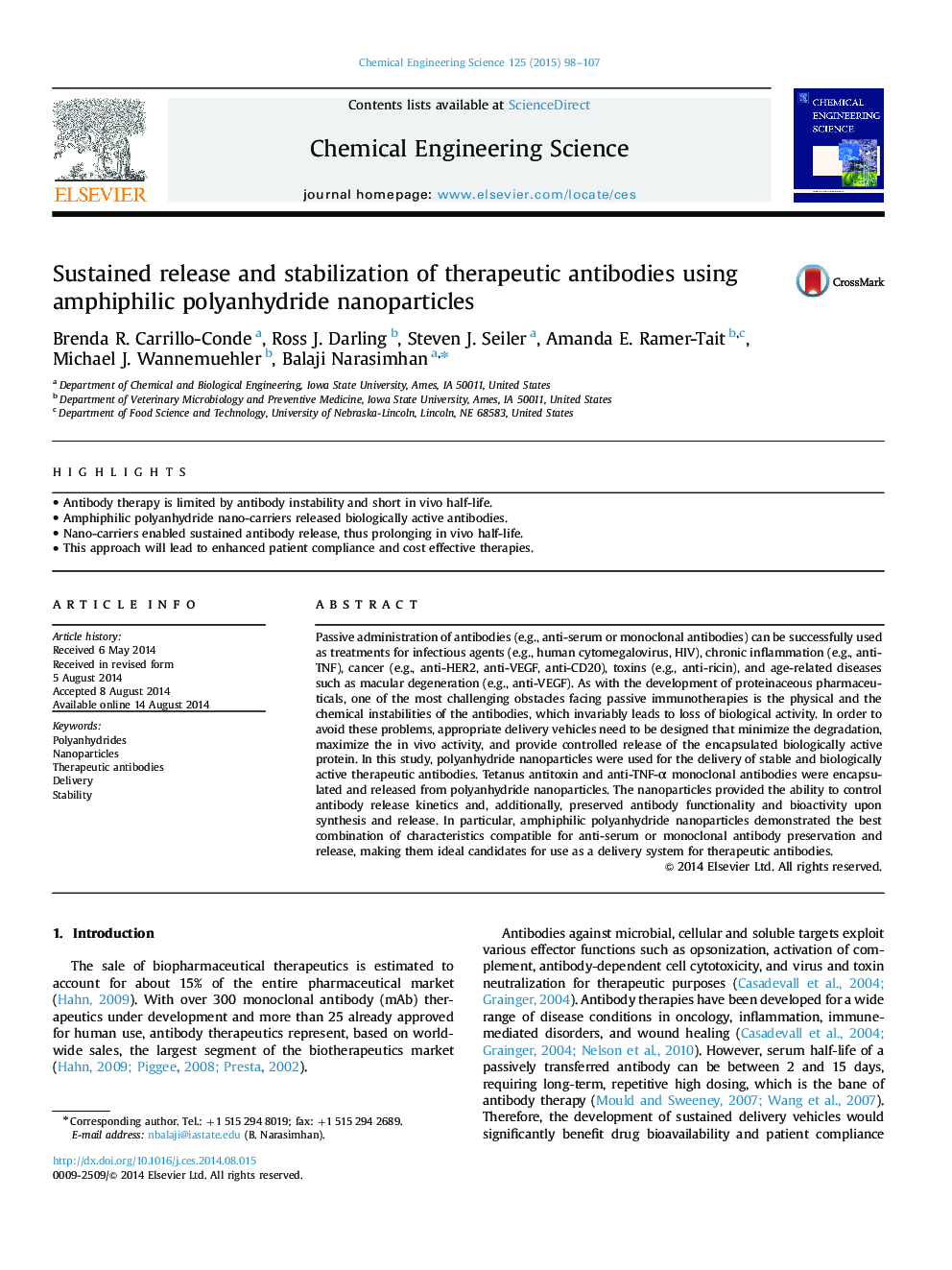| کد مقاله | کد نشریه | سال انتشار | مقاله انگلیسی | نسخه تمام متن |
|---|---|---|---|---|
| 6590424 | 456857 | 2015 | 10 صفحه PDF | دانلود رایگان |
عنوان انگلیسی مقاله ISI
Sustained release and stabilization of therapeutic antibodies using amphiphilic polyanhydride nanoparticles
ترجمه فارسی عنوان
آزادی پایدار و تثبیت آنتی بادی های درمانی با استفاده از نانوذرات پلی آبه ای فشرده
دانلود مقاله + سفارش ترجمه
دانلود مقاله ISI انگلیسی
رایگان برای ایرانیان
کلمات کلیدی
پلیان هیدریدس، نانوذرات، آنتیبادی های درمانی، تحویل، ثبات،
موضوعات مرتبط
مهندسی و علوم پایه
مهندسی شیمی
مهندسی شیمی (عمومی)
چکیده انگلیسی
Passive administration of antibodies (e.g., anti-serum or monoclonal antibodies) can be successfully used as treatments for infectious agents (e.g., human cytomegalovirus, HIV), chronic inflammation (e.g., anti-TNF), cancer (e.g., anti-HER2, anti-VEGF, anti-CD20), toxins (e.g., anti-ricin), and age-related diseases such as macular degeneration (e.g., anti-VEGF). As with the development of proteinaceous pharmaceuticals, one of the most challenging obstacles facing passive immunotherapies is the physical and the chemical instabilities of the antibodies, which invariably leads to loss of biological activity. In order to avoid these problems, appropriate delivery vehicles need to be designed that minimize the degradation, maximize the in vivo activity, and provide controlled release of the encapsulated biologically active protein. In this study, polyanhydride nanoparticles were used for the delivery of stable and biologically active therapeutic antibodies. Tetanus antitoxin and anti-TNF-α monoclonal antibodies were encapsulated and released from polyanhydride nanoparticles. The nanoparticles provided the ability to control antibody release kinetics and, additionally, preserved antibody functionality and bioactivity upon synthesis and release. In particular, amphiphilic polyanhydride nanoparticles demonstrated the best combination of characteristics compatible for anti-serum or monoclonal antibody preservation and release, making them ideal candidates for use as a delivery system for therapeutic antibodies.
ناشر
Database: Elsevier - ScienceDirect (ساینس دایرکت)
Journal: Chemical Engineering Science - Volume 125, 24 March 2015, Pages 98-107
Journal: Chemical Engineering Science - Volume 125, 24 March 2015, Pages 98-107
نویسندگان
Brenda R. Carrillo-Conde, Ross J. Darling, Steven J. Seiler, Amanda E. Ramer-Tait, Michael J. Wannemuehler, Balaji Narasimhan,
